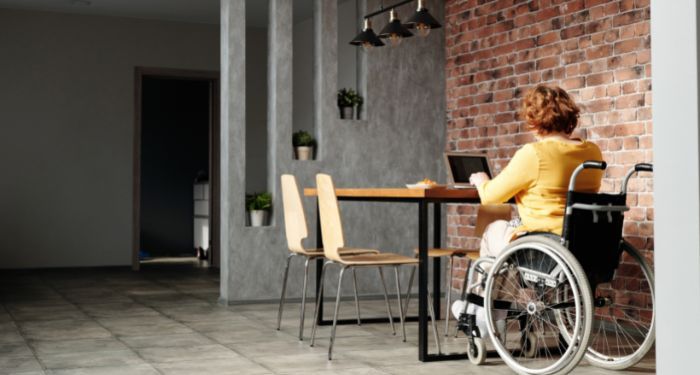It’s Disability Pride Month! I love seeing all of the enthusiasm around disabled literature — the TBRs, recommendation videos, events with disabled authors — it’s one of my favorite times of the year. But while all of that is wonderful, I would love to see nondisabled content creators make changes to ensure that their content is as accessible as they can make it.
Just like the rest of society, ableism exists within the bookish community. Publishers produce far too few books by disabled people. Print readers keep questioning whether audiobooks actually count as reading. Bookstagrammers complain that adding image descriptions to their captions ruins their “aesthetic.” YouTubers and TikTok creators insist that adding captions to their videos just takes too much time to make it worthwhile.
The truth is that, both in and outside of the book community, dismantling ableism takes effort. It takes time and dedication, and people must possess a willingness to decenter themselves and listen to disabled people. Disability allies don’t have to be perfect. A little bit of effort and a willingness to change go a long way.
While this is by no means an exhaustive list, here are a few tips to help you be a better ally for disabled people in the online bookish world.
Add captions to your videos.
Whether it’s a BookTube video or just a fifteen second story on Instagram, add captions so that hard of hearing (HoH) and Deaf people know what’s being said. This includes the lyrics of songs too!
Add image descriptions to your photos on Instagram.
As a disabled person who struggles with reading text, I often come across infographics that I can’t read. I use the voiceover feature on my iPhone, so I don’t have access to alt text. While some screen readers do read the alt text on images, the more affordable screen readers typically don’t. Image descriptions don’t have to be elaborative or intensely detailed. Just note what kind of image it is (graphic, photo, painting, etc.), describe the image, and include a transcript of any text.
Make sure your book club picks are accessible in multiple formats.
If you’re in charge of selecting books for a book club or event, do a quick search on your favorite audiobook apps and ebook websites to make sure the book is available in multiple formats so people who use audiobooks or ebooks to read can participate.
Read about different kinds of disabilities.
There are so many kinds of disabilities in the world. It’s important to read about these different experiences and support the authors’ work. Ask yourself questions like, what kinds of disabilities haven’t I read about? What kinds of disability literature is missing from my reading life?
Choose a disability TBR that represents a diverse range of experiences.
It’s vitally important to take an intersectional approach to reading about disability. Disabled people exist in every community, creating an endless number of experiences. Be especially sure that you also read books by people with multiple marginalized identities, like disabled Black, Indigenous, people of color, LGBTQ+, working class, and immigrant authors.
Follow disability advocates and activists.
Whatever your method of choice — social media, newsletters, online articles — be sure to follow disability advocates and activists. These creators work very hard at educating people about disability-related issues. While I don’t have space to name all of my favorites, you could start by following people like Imani Barbarin, Jessica Kellgren-Fozard, Higher Priestess, and Nina Tame. In the bookish world, check out the work of Carly Findlay and Alice Wong, who both highlight a range of disabled writers online.
Read literature by disabled chronically ill, neurodivergent, and Deaf authors all year long.
Yes, it’s wonderful to celebrate disabled people during Disability Pride Month; however we should be seeking out books by disabled people all year long. Personally, I try to read at least one book by a disabled person per month, which is a great place to start!
For more about Disability Pride Month, check out “A Book Lover’s Guide to Disability Pride Month.” Looking for book recommendations? Check out “10 2SLGBTQ+ Disabled Authors to Read for Pride Month” and “9 Nonfiction Books About Disability by People of Marginalized Authors.”
